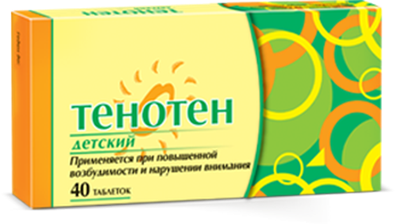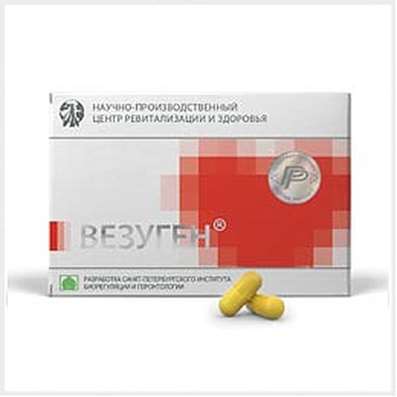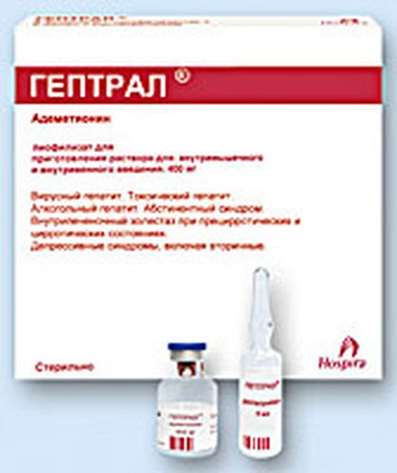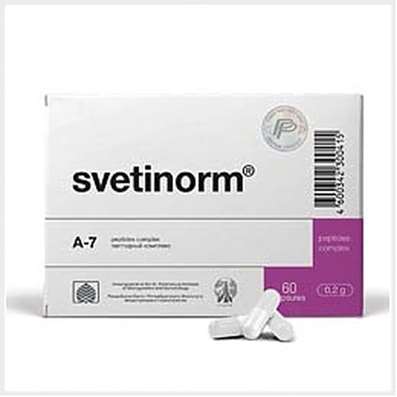Instruction for use: Serotonin
I want this, give me price
Dosage form: Solution for intravenous and intramuscular injection
Active substance: Serotonin
ATX
B02BX Hemostatics system others
Pharmacological group:
Serotonergic agents
The nosological classification (ICD-10)
C80 Malignant neoplasm without specification of localization: Malignant tumor; Malignant neoplasm; Malignant neoplasms of different localization; Malignant tumors; Eton-Lambert syndrome; Locally prevalent forms of malignant neoplasms; Metastatic ascites; Metastatic ascites; Cerebellar degeneration in tumors; Hereditary cancers; Metastatic tumors; Cancer ascites; Solid tumors
D61.9 Aplastic anemia, unspecified: Myelophthisis anemia; Anemia hypoplastic; Partial anemia; Aplasia of the bone marrow; Aplastic anemia; Congenital hypoplastic anemia; Bone marrow hypoplasia; Hypoplastic anemia; Hematopoietic disorders; Hereditary hypoplastic anemia; Normochromic-normocytic anemia
D69.3 Idiopathic Thrombocytopenic Purpura: Werlhof's Disease; Idiopathic autoimmune thrombocytopenia; Idiopathic thrombocytopenic purpura of adults; Idiopathic thrombocytopenic purpura in adults; Immune idiopathic thrombocytopenic purpura; Immune thrombocytopenia; Bleeding in patients with thrombocytopenic purpura; Evans Syndrome; Thrombocytopenic purpura; Thrombocytopenia of immune origin; Chronic idiopathic thrombocytopenic purpura; Essential thrombocytopenia; Autoimmune thrombocytopenic purpura in pregnancy; Posttransfusion purpura
D69.6 Thrombocytopenia, unspecified: Hemorrhagic diathesis of thrombocytopenic origin; Hemorrhagic syndrome of thrombocytopenic origin; Idiopathic thrombocythemia; Thrombocytopenia; May-Hegglina anomalies; Hereditary thrombocytopathies; Fever with thrombocytopenia
D69.9 Hemorrhagic condition, unspecified: Diathesis, hemorrhagic (familial); Hemorrhagic diathesis; Hemorrhagic complications; Hemorrhagic conditions; Hemorrhagic diathesis; Hemorrhagic syndrome; Disease of internal organs with hemorrhagic syndrome
I79.2 Peripheral angiopathy in diseases classified elsewhere: diabetic angiopathy; Angiopathy in diabetes; arteriosclerosis diabetic; Pain in lesions of peripheral nerves; Diabetic angiopathy; Diabetic microangiopathy; Diabetic vascular disease; Intermittent angioneurotic disbaziya; Macroangiopathy in diabetes; microangiopathy; Microangiopathy in diabetes mellitus; Tingling sensations in the hands and feet; Coldness in the extremities; Peripheral angiopathy; Peripheral arterial disease; Sclerosis Menkeberga; Chronic obliterating diseases of arteries
K56.6 Other and unspecified intestinal obstruction: Intestinal obstruction; Mechanical violation of food passage; Intestinal obstruction; Sigmoid and cecum turn; Functional intestinal obstruction; Violation of intestinal patency; Syndrome of distal intestinal obstruction; Intestinal obstruction mechanical
R57 Shock, not elsewhere classified: Obstructive shock
T66 Unspecified radiation effects: Radiation disease; Diarrhea radiation; Gastrointestinal syndrome with irradiation; Radiation sickness; Radiation disorders of mucous membranes; Irradiation chronic; Osteoradionecrosis; Acute radiation sickness; Acute and chronic radiation injuries; Acute radiation syndrome with radiation therapy; Subacute and chronic radiation sickness; Radiation Neuropathy; Radiation edema; Radiation damage to the nervous system; Radiation immunodeficiency; Radiation syndrome; Radio-epileleitis; Radiation acute syndrome; State after irradiation; Cytopenia due to previous radiation or chemotherapy; Cytopenia radiation; Cytopenia due to radiation therapy; Cytopenia due to chemotherapy
Y43.3 Adverse reactions in the therapeutic use of other antitumor drugs
Composition and release form
Solution for intravenous and intramuscular injection 1 ml
Serotonin adipate 10 mg
Auxiliary substances: unitiol; Water for injection
In the planar cell package 5 ampoules of 1 ml; In a pack of cardboard 1 package.
Description of dosage form
A colorless or slightly colored transparent solution with a faint smell of hydrogen sulphide.
Characteristic
Hemostatic agent.
Pharmachologic effect
Mode of action - hemostatic, serotonergic.
Pharmacodynamics
The effect is mainly related to the ability to increase platelet aggregation and reduce the permeability of capillaries, as well as the reduction of bleeding time. Serotonin causes constriction of the kidney vessels and has an antidiuretic effect. It binds to serotonin receptors of smooth muscles of internal organs and normalizes its contractile activity and automatism (endogenous vasomotorics, peristalsis). The manifestation of the normalization of the function of smooth muscles with the introduction of serotonin is the stabilization of hemodynamics, the restoration of motor-evacuation function of the gastrointestinal tract, the reduction of local hypoxia.
Pharmacokinetics
In blood plasma deaminated and loses its activity. Does not possess a cumulative effect.
Clinical Pharmacology
In the period from 2000 to 2003, In the Main Military Clinical Hospital. N.N. Burdenko conducted clinical studies on the use of serotonin adipate (CA) for the treatment of cardiovascular failure in patients with IHD and in patients after cardiosurgical and complicated abdominal operations / 1, 2, 3, 4 /.
Studies were conducted on 118 patients who were divided into 2 groups according to the existing pathology.
The group of patients with IHD included 63 men aged 45 to 88 years. In 54% of patients, a large-focal myocardial infarction (MI) was diagnosed, 65% had a history of postinfarction cardiosclerosis. All the patients had heart failure: 40% in the form of acute left ventricular failure (2-4 functional class), 71% in the form of circulatory failure (2-4 functional class). In anamnesis, 35 patients had arterial hypertension, 15 had diabetes mellitus (4).
All patients received complex therapy, including indications nitrates, ACE inhibitors, beta-blockers, diuretics, cardiac glycosides, anticoagulants and disaggregants. The observation was carried out using a 24-hour monitoring system for blood pressure, ECG with recording the dynamics of the ST segment, rhythm disturbances, conduction and other necessary diagnostic tests. To assess left ventricular contractility, an echocardiographic study was performed according to a conventional technique.
After the initial data were recorded, 10 mg (1 ml - 1%) of CA in 200 ml of physiological solution were dripped for 60 minutes intravenously. Infusion SA was not accompanied by negative subjective sensations.
After introduction of CA observed enhancement of myocardial contractile activity hypokinetic zones, accompanied by a decrease in end-systolic volume, an increase in stroke volume and ejection fraction increases. Improvement of contractile activity of the myocardium was recorded in patients with various forms of IHD both in the acute stage of myocardial infarction and in the presence of postinfarction cardiosclerosis.
The second group consisted of 56 patients (45 men and 11 women) aged 22 to 79 years. The most part - 63%, were patients who underwent heart surgery under conditions of artificial circulation.
In this group of patients after cardiac surgery and complex abdominal surgical procedures in the postoperative period developed dysfunction of smooth muscle (GM) of the microvasculature of the heart, lungs, gastrointestinal tract and other organs, with the emergence of tissue hypoxia. All patients were on artificial ventilation in the surgical resuscitation. The range of therapeutic activities, including blood and infusion preparations crystalline solutions, antibiotics, inotropic and vasopressor therapy, the presence of clinical signs of a critical state - circulatory disorder (hypotension, tachycardia, hypoxemia), disorder or complete lack of gut motility, CA has been inserted. It was injected through the central or peripheral vein at a rate of 10 mg / h in the first hours of the postoperative period. GM regeneration function and the motor-evacuation function of the intestine takes place directly during the injection and was accompanied by increased motility, discharge of gases and feces. Patients CA introduction accompanied by increased arterial blood pO2 10-105% of baseline (mean 40%), which indicates an improvement in pulmonary hemodynamics. Increased blood pO2 normalises metabolic processes in the myocardium, brain, liver and other organs, thereby preventing the development of mono- (cardiovascular) and multiple organ failure / 3, 4 /.
Indication of the drug Serotonin
Hemorrhagic syndrome (with Verlhof disease, with malignant neoplasms, including against the background of cytostatics treatment, with acute, subacute and chronic radiation sickness);
Anemia hypo- and aplastic;
Thrombocytopenia, hemorrhagic vasculitis;
Hypoxemia, vascular insufficiency;
Diseases in the genesis of which is dysfunction of smooth muscles of the microcirculatory bed (including ischemic and diabetic angiopathy);
Functional intestinal obstruction (PKN);
Shock of various genesis.
Contraindications
Hypersensitivity to any component of the drug;
Kidney disease, incl. Glomerulonephritis (acute and chronic), oligo- and anuria;
arterial hypertension;
Acute thrombosis;
Angioedema;
bronchial asthma;
Diseases accompanied by hypercoagulability.
Application in pregnancy and breastfeeding
During pregnancy, the effect of the drug has not been studied. Since the drug is rapidly deaminated in the bloodstream, breast-feeding is not a contraindication for its use.
Side effects
Pain along the vein (with rapid administration), with the / m introduction - soreness in the injection site; Abdominal pain, cardialgia, increased blood pressure, heaviness in the head, difficulty breathing, nausea, diarrhea, decreased diuresis.
Interaction
Serotonin potentiates the effect of narcotic, hypnotics and analgesic drugs. It is not administered together with calcium chloride preparations.
Dosing and Administration
IV IM. With severe bleeding start with IV injection, with a decrease in bleeding transfer to the / m injections. The initial dose is 5 mg, in the absence of side effects, the dose is increased to 10 mg, but not more than 15-20 mg / day. The course of treatment is 10 days (on average).
Preparation of solution for intravenous administration. 5-10 mg are diluted in 100-150 ml of a 0.9% solution of sodium chloride (or in 5-10 ml of 0.9% sodium chloride solution, which is then diluted in 100-150 ml of a 5% solution of dextrose, plasma, canned blood) And injected drip (at a rate of not more than 30 drops / min).
Preparation of solution for intravenous administration. 5-10 mg is diluted in 5 ml of a 0.5% solution of lidocaine; Enter 2 times a day with an interval of at least 4 hours.
With ischemia of the lower extremities, patients with diabetes mellitus receive a drop of 1% solution of 2 ml in 200 ml of Ringer's solution for 1.5 hours.
In complex therapy for patients in a critical (shock) state, intravenous administration is performed at a rate of 5-10 mg / h. Selection of the dose and the speed of administration of the drug is determined individually.
With vascular insufficiency - under the control of blood pressure before its stabilization.
With FCS - before the appearance or intensification of intestinal peristalsis, recovery of motor-evacuation function of the gastrointestinal tract.
Literature
1. Simonenkov AP, Klyuyev VM, Ardashev VN, Fedorov VD, Vrublevsky O.Yu. The use of serotonin adipate for the improvement of contractile activity of hypokinetic zones of the myocardium // Military Medical Journal .- 2002.- ¹ 1.
2. Simonenkov AP, Fedorov VD, Klyuzhev VM, Ardashev VN The use of serotonin adipate for the restoration of impaired function of smooth muscles in surgical and therapeutic patients // Bulletin of Intensive Therapy .- 2005.- No. 1.
3. Fedorov VD, Simonenkov AP, Klyuzhev VM, Ardashev VN And others. Clarification of the classification of hypoxic states // Bulletin of the Russian Academy of Medical Sciences, 2004.- No. 1.
4. Report on the clinical results of a 1% solution of serotonin adipate in the treatment of cardiovascular insufficiency in patients with coronary heart disease, in patients after cardiosurgical and complicated abdominal operations, who were on treatment at the intensive care unit of the State Hermitage. Burdenko for the period of 2000-2003. (Manuscript), 2003, Moscow.
A comment
Draft changes to the instruction on examination.
Storage conditions of the drug Serotonin
In the dark place at a temperature of no higher than 25 ° C.
Keep out of the reach of children.
Shelf life of the drug Serotonin
2 years.
Do not use after the expiry date printed on the package.

 Cart
Cart





